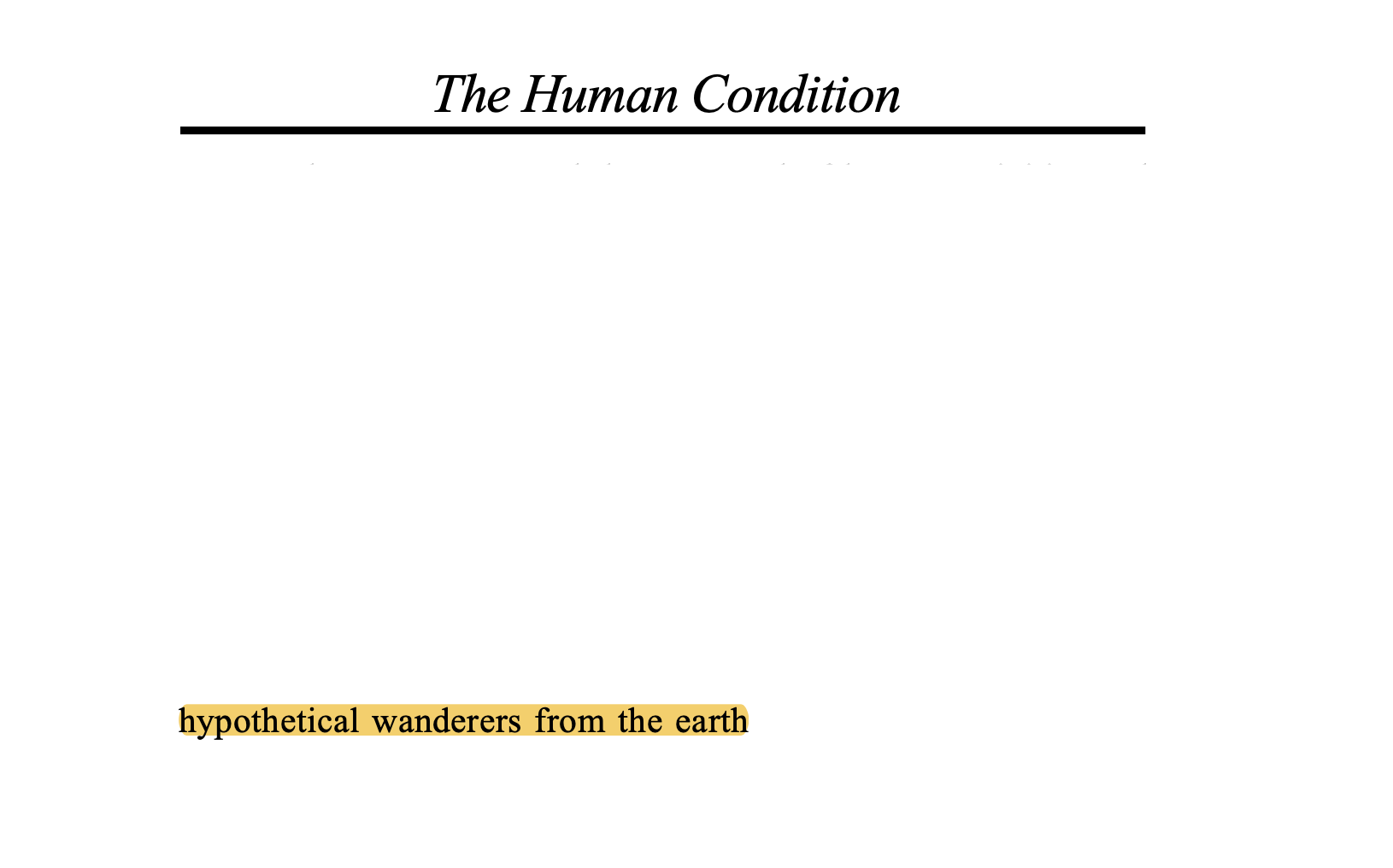installation / performance / video / film


Highlights, 2024
multimedia, moving metal stand, 150x60cm, digital prints, video, colour, AI generated sound.
duration: 06:06 min.
participating: Iga Koncka, Konstantina Tsagianni, Laisul Hoque, Ken Nakajima
A multimedia installation based on a collective reading of Hannah Arendt’s The Human Condition (1958) reconceptualizing reading as a visual and performative practice of action and participation, and viewing as a practice of listening, reading and reflecting. By interweaving fragments of human intelligence (the readers’ highlighted pdfs’) with artificial intelligence (sound), the installation constructs a democratic mechanism of changes and exchanges that encourages viewers to participate in a viewing-now that evolves into a reading-later, facilitating a dialogic interplay between the self and the others, human and machine.
documentation: https://vimeo.com/1037879964
video: https://vimeo.com/1038230858

Self-images from a future that is already happening, 2023
multi-channel video installation, colour, sound.
duration: 06:30 min.
participating: Konstantina Antonopoulou, Albert Barqué-Duran, Mikhail Karikis, Akrivi Koukouli, Vagelis Kontos
A group of artists was asked to respond to the image of the future and the significance that art can play in a contemporary discussion on climate change. The participation here means connection and communication, but also the capacity for distinction, the articulation of different perspectives on the same subject, exploring the layers of diversity and differentiation through the formation of a unified polyphonic body: the development of a shared reflection on the image of the future and on the significance an artistic discussion around climate change might hold. The participants digitally selected the effect for their self-image, subverting the logic of identity and the frameworks of truth production, allowing themselves to be mediated through technology.
video: https://vimeo.com/1095095994/9a16a6477f


Notes on Hannah Arendt, 2022
multimedia, video, monochrome, silent, printer, michrophone on tripod stand.
duration: 00:35 min.
This installation, composed of a printer, a microphone, and a monitor showing the artist engaged in silent speech, explores Hannah Arendt’s theory of action by animating the human capacity to begin anew. The silent figure on the screen resists speech-as-declaration, while the printer, becomes a metaphor for potentiality rather than finality. Together, they gesture toward Arendt’s notion of natality: the radical openness of action as the site where the subject escapes definition and enters the realm of becoming, situated between others-viewers.
video: https://vimeo.com/674899513

4.48, 2022
4.48 is a paper-made clock following its own rhythms. A sculptural re-imagining that directs and performs Sarah Kane’s 4.48 Psychosis. Moving from theatre to visual art, 4.48 becomes a thought-thing that performs itself through silences and spaces between words. The clock does not tell time but designates a time-space for reflection, speaking in absence, tension, and what remains unsaid. Footage of Elisabeth Schwarzkopf singing Schubert’s An die Musik (1961, BBC) accompanies the work silently. By juxtaposing Kane’s text with this archival footage, the artist composes a self-portrait through silence, fragmentation, and resonance, displacing her embodied presence.
video: https://vimeo.com/677488903
documentation: https://vimeo.com/714746033